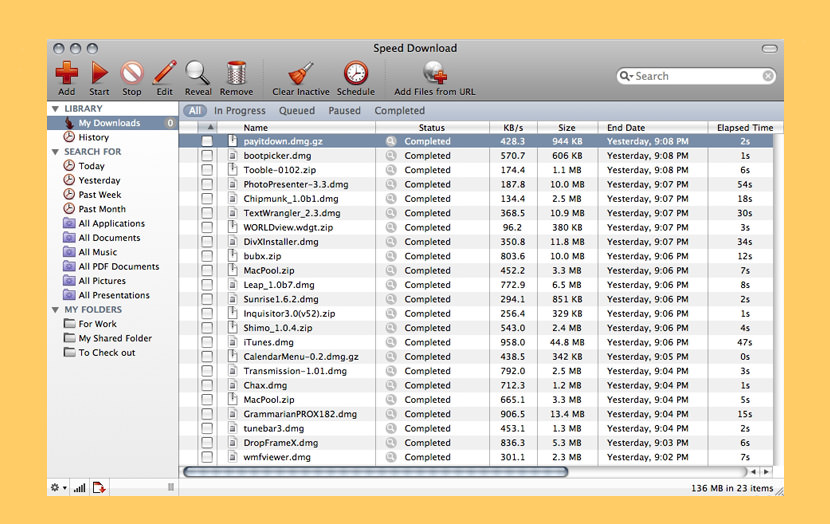By default, your Mac starts up from its built-in hard disk, but a startup disk can be any storage device that contains an operating system compatible with your Mac. For example, if you install macOS on an internal or external drive, your Mac can recognize that drive as a startup disk. You can then follow the steps in this article to start up from it.
Use Startup Disk preferences
When you use Startup Disk preferences to select a startup disk, your Mac starts up from that disk until you choose a different one.
Folx is a free download manager for Mac OS X with a true Mac-style interface. It offers convenient downloads managing, flexible settings, etc. Folx has a unique system of sorting and keeping the downloaded content. IGetter: iGetter is a full featured download manager and accelerator. Mac OS X Snow Leopard V10.6 is one of the best operating systems that have been developed by Mac. Mac OS X Snow Leopard is compatible with all the latest devices of Apple as well as it provides various fixes. Mac OS X Snow Leopard V10.6 Free Download Overview According.
- Choose Apple () menu > System Preferences, then click Startup Disk.
- Click and enter your administrator password.
- Select your startup disk, then restart your Mac.
If you see a message that your security settings do not allow this Mac to use an external startup disk, check the External Boot setting in Startup Security Utility.
Use Startup Manager
When you use Startup Manager to select a startup disk, your Mac starts up from that disk once, then returns to using the disk selected in Startup Disk preferences.


- Press and hold the Option key immediately after turning on or restarting your Mac.
- Release the Option key when you see the Startup Manager window.
If your Mac is protected by a firmware password, you can release the key when you're asked to enter the password. - Select your startup disk, then click the arrow under its icon, or press Return.
If you press and hold the Control key during this step, your selection is saved in Startup Disk preferences, so it persists until you change it.
If your Mac is using OS X Lion 10.7.3 or later, you can also use this method to start up from your Time Machine backup disk. Startup Manager identifies your Time Machine backup as ”EFI Boot.”
If you can't select your startup disk or start up from it
Check for these possibilities if you can't see your disk in Startup Disk preferences or Startup Manager, or your Mac won't start up from it.
Check for a valid operating system on the startup disk
Make sure that your startup disk is using a version of macOS that's compatible with your Mac. You might need to reinstall macOS on that disk.
Download Manager Mac Free
Check startup security settings
Free Download Manager Mac Os X 10.7
If you're using a Mac that has the Apple T2 Security Chip, check the settings in Startup Security Utility. These settings determine whether your Mac can start up from another disk.
Check for Option ROM firmware
If you're in Startup Manager and can't see your startup disk, press Option-Shift-Command-Period. If that works, do this each time you want to start up from the device or from a startup disk connected to it.
To enhance system security, Mac computers with up-to-date software don’t show devices that have Option ROM firmware until you press these keys in Startup Manager to load the firmware. On Mac models from early 2015 or earlier, you can disable this security feature to load Option ROM firmware automatically. This removes an important protection against potential unauthorized access to your Mac by other people with physical access to it.
- Open the Terminal app, which is in the Utilities folder of your Applications folder.
- Type
sudo nvram enable-legacy-orom-behavior=1, then press Return.
To undo this command, entersudo nvram -d enable-legacy-orom-behavior.
If you're using a firmware password on your Mac, the ability to load Option ROM firmware automatically or manually is disabled as an additional security protection. If you want to remove this additional protection but keep your firmware password:
- Open the Terminal app, which is in the Utilities folder of your Applications folder.
- Type this command, then press Return:
sudo firmwarepasswd -setmode command -allow-oroms
To undo this command, entersudo firmwarepasswd -setmode command. - Type the administrator password for your user account, then press Return.
- Type your firmware password, then press Return.
- Restart your Mac.